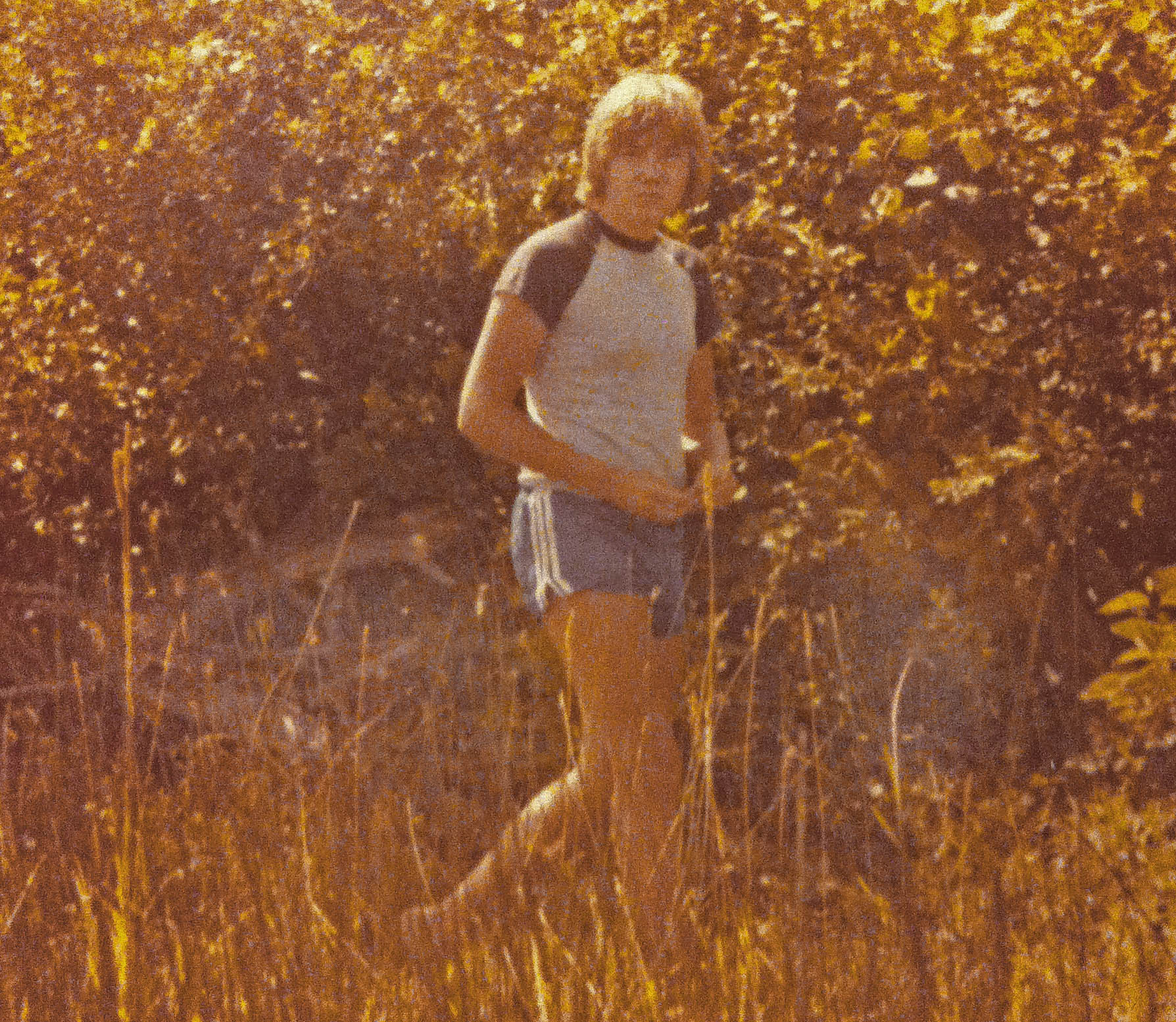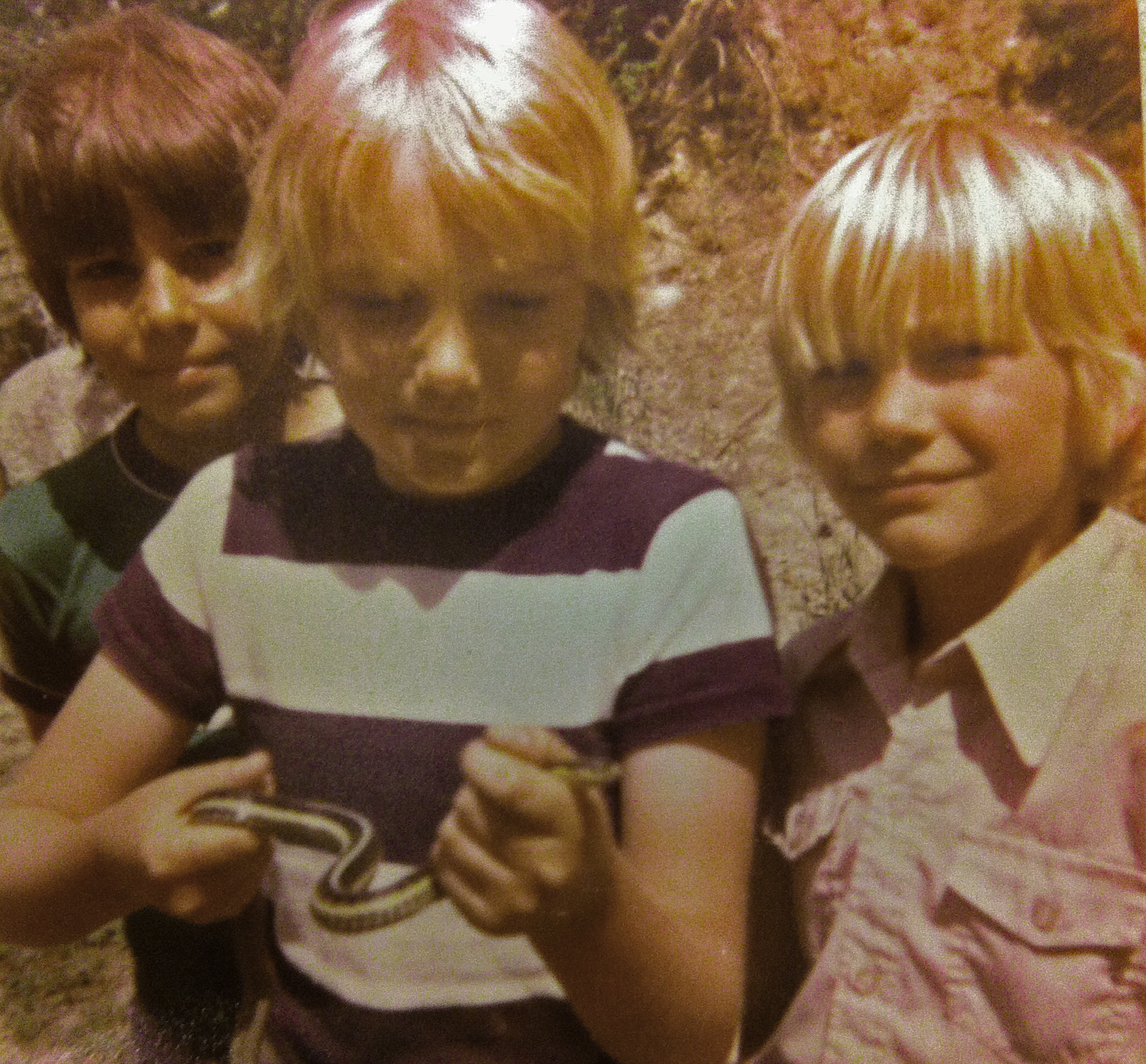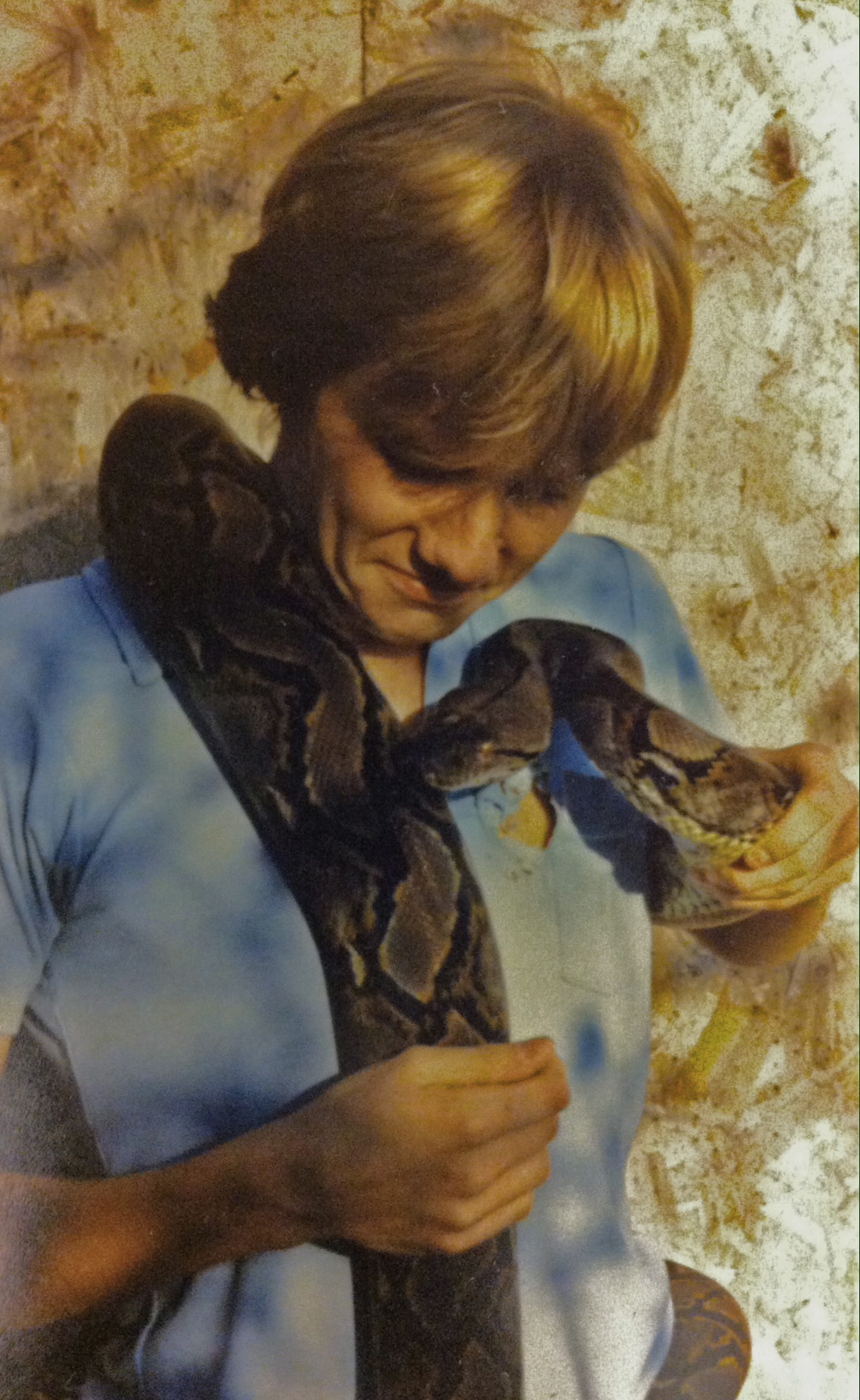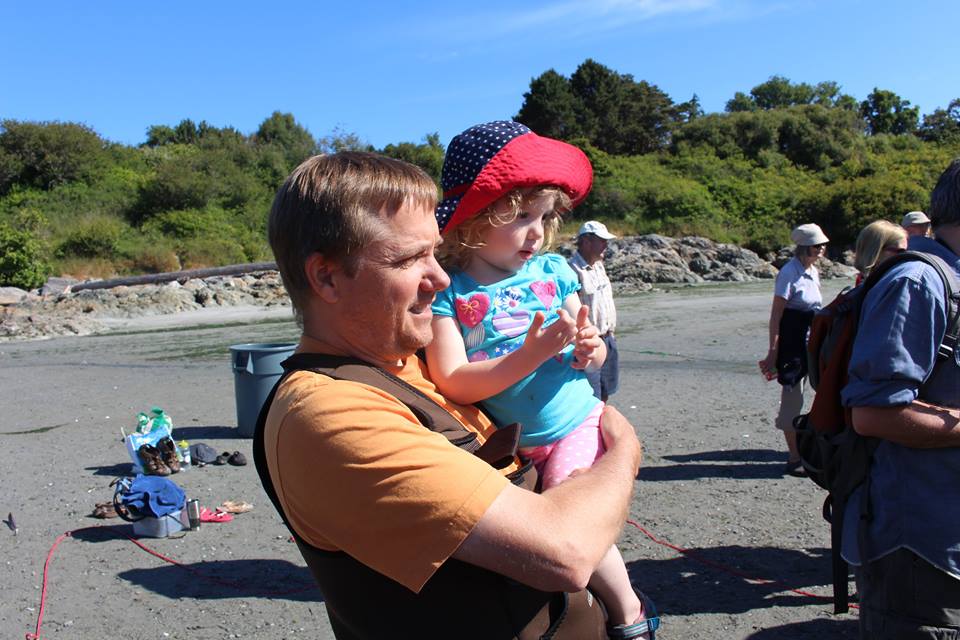I am sure my parents just shook their heads when I started bringing home reptiles and amphibians, but they did not discourage me. That is what matters. They suffered the smells that wafted from the various cages, had to deal with escaped snakes, lizards and newts (newts always were found dried-out in mid-stride…), and took me to the hospital after a large python tried to kill me. But I don’t think they had any idea that my interest in animals would lead to a worthwhile career.
 Chasing snakes and frogs in the Interlake of Manitoba (Norris Lake).
Chasing snakes and frogs in the Interlake of Manitoba (Norris Lake).
In winter my Dad took me out to buy goldfish, and in summer, we’d go to nearby ponds to catch frogs to feed to my pet snakes. We’d also do our annual pilgrimage to the snake dens at Narcisse, in Manitoba’s interlake region. I was a lucky kid. My parents let me vanish into swamps with ice cream buckets to hunt frogs and snakes all day. I wonder what proportion of kids today are so free. Perhaps there is a game now where kids get to catch and keep frogs and snakes. Sim-Terrarium anyone?
 Granite Lake, west of Kenora, Ontario – one of many snakes I caught as a kid, along with Jamie Coyle and my brother Ian.
Granite Lake, west of Kenora, Ontario – one of many snakes I caught as a kid, along with Jamie Coyle and my brother Ian.
These memories came flooding back because my friend Lea also has started her son on a similar path. Lea has allowed her son to have a pet praying mantis and a chamaeleon… who knows what is next. My guess is a Bearded Dragon will be next or a Leopard Gecko. A few decades from now perhaps he will have my job here at the RBCM.
 Canada goose bones from the RBCM collection (RBCM 16187).
Canada goose bones from the RBCM collection (RBCM 16187).
Last week I helped a young lad identify a bone he had found. Obviously he had ideas about the bone’s identity, and had wondered whether it was a skull or not. But after a short visit to the Ornithology collection, I was able to show that the bone he found was the sternum from a Canada Goose. Then I explained where muscles attached that allowed the bird to flap its wings – and how to find the same muscles on the next chicken or turkey they roasted. Perhaps he will become a prominent comparative anatomist. And he too will thank his parents for helping foster an interest in nature.
 Parents – try not to freak out when your kid brings one of these home.
Parents – try not to freak out when your kid brings one of these home.
Perhaps I am to these kids, what Bill Preston was to me. Bill was the herpetologist at the Manitoba Museum, and as the author of the Amphibians and Reptiles of Manitoba, he made a great impression on me. Bill’s book (now very worn) kept me interested in amphibians and reptiles and I eventually replaced him at the Manitoba Museum as their Vertebrate Zoologist. If we spark the imaginations of kids and get them outside to build our next generation of naturalists, who knows where they will end up. I was thrilled to see so many kids at the RBCM’s two commemorative beach walks this summer – my youngest daughter included.
 Anna and I during the June 14th beach seine at Willows Beach (photo by Chris O’Connor, RBCM)
Anna and I during the June 14th beach seine at Willows Beach (photo by Chris O’Connor, RBCM)
We also hosted some amazing kids this year at our Gold Rush day camps. They certainly will remember the vats and jars of pickled specimens in my lab. These kids are the future scientists, politicians, lawyers, entrepreneurs, and regardless of which career they choose (we can’t all be lucky enough to work at a museum), kids need exposure to nature. It doesn’t matter if kids like lichen, liverworts, lepidoptery, or leopard frogs, our job as parents and mentors is to make sure today’s kids appreciate and value their connection to the earth.
Learning about soil (photo by my wife, Jeannette Bedard).



![p1090693[1]](http://staff.royalbcmuseum.bc.ca/wp-content/uploads/2015/09/p10906931.jpg)